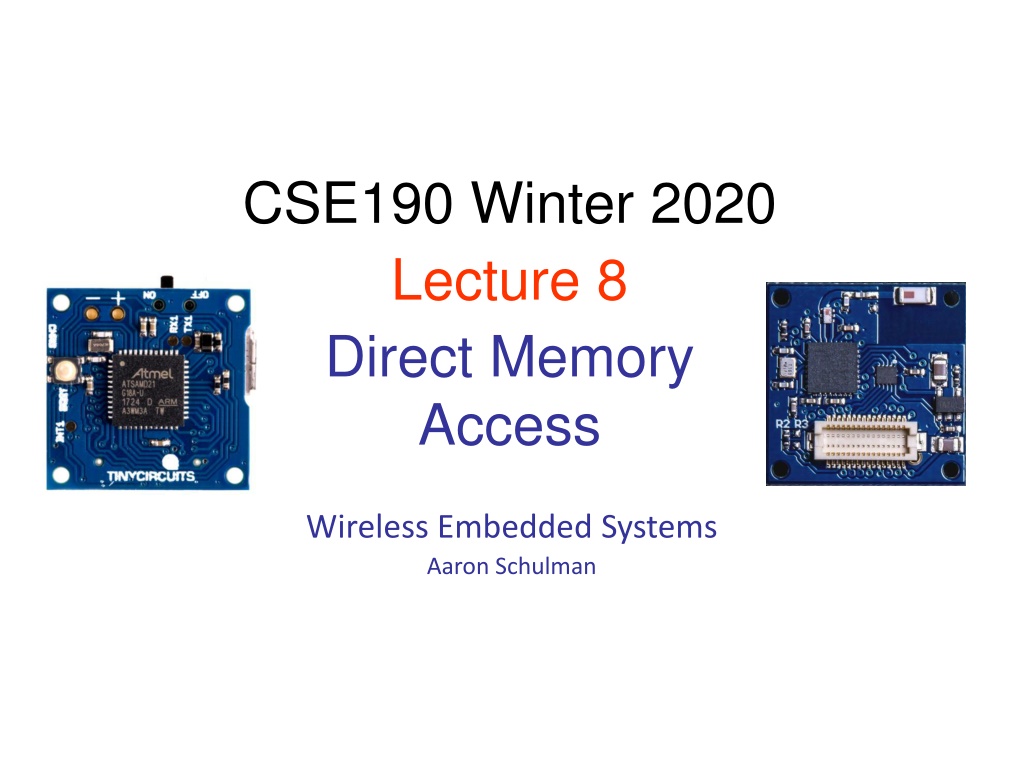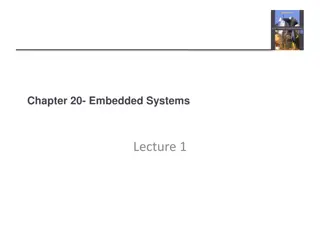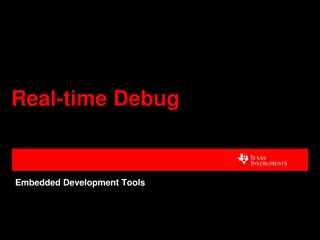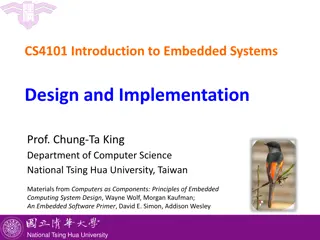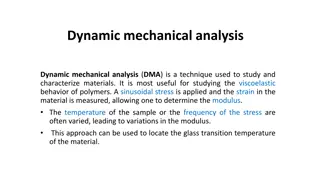Understanding Direct Memory Access (DMA) in Embedded Systems
Direct Memory Access (DMA) plays a crucial role in transferring large blocks of data efficiently in embedded systems. This technology allows data to be moved between peripherals and main memory without continuous processor intervention, enhancing speed and reducing CPU overhead. By offloading data transfer tasks to a dedicated DMA controller, the system can achieve high-speed data transfer and optimize performance. Learn about the importance of DMA, its advantages over conventional data transfer methods, and its impact on system efficiency in this informative content.
Download Presentation

Please find below an Image/Link to download the presentation.
The content on the website is provided AS IS for your information and personal use only. It may not be sold, licensed, or shared on other websites without obtaining consent from the author. Download presentation by click this link. If you encounter any issues during the download, it is possible that the publisher has removed the file from their server.
E N D
Presentation Transcript
CSE190 Winter 2020 Lecture 8 Direct Memory Access Wireless Embedded Systems Aaron Schulman
Reminder: Midterm next week Will evaluate your understanding of concepts needed to implement the first project Architecture of microcontrollers (peripherals, MMIO, RAM) Timers GPIO Implementing and debugging firmware (and reading datasheets) Will evaluate your understanding of serial communication: Digital communication: how do we move bits over wires SPI, I2C, UART
How do you move data to and from peripherals in MMIO? Moving data to a peripheral? - CPU instructions that write data from RAM to MMIO SPI->DATA = X[1]; Moving data from a peripheral? CPU instructions that read MMIO to RAM X[2] = SPI->DATA;
Why do we need DMA? Polling and Interrupt driven I/O concentrates on data transfer between the processor and I/O devices. An instruction to transfer (mov datain,R0) only occurs after the processor determines that the I/O device is ready Either by polling a status flag in the device interface or Waits for the device to send an interrupt request. Considerable overhead is incurred, because several program instructions must be executed for each data word transferred.
Why do we need DMA? Moving things is a waste of CPU instructions: Instructions are needed to increment memory address and keeping track of how many bytes are moved.
Direct Memory Access (DMA) To transfer large blocks of data at high speed, an alternative approach is used, called DMA. Blocks of data are transferred between an external device and the main memory, without continuous intervention by the processor. It s just another peripheral, but it s only job is moving data.
DMA Controller DMA controller is connected to the internal I/O bus. Performs the functions that would normally be carried out by the processor when access main memory. For each word transferred, it provides the memory address and all the bus signals that control data transfer.
The DMA Transaction in a nutshell 1. Device wishing to perform DMA asserts the processors bus request signal. 2. Processor completes the current bus cycle and then asserts the bus grant signal to the device. 3. The device then asserts the bus grant ack signal. 4. The DMA device performs the transfer from the source to destination address. 5. Once the DMA operations have been completed, the device releases the bus by asserting the bus release signal. 6. Processor acknowledges the bus release and resumes its bus cycles from the point it left off.
Use of DMA Controllers 2. DMA controller requests transfer to memory RAM GPIOs 4. ACK DMA controller Bus control logic 5. Interrupt when done Processor Storage 1. CPU sets up a memory transaction on the DMA controller 3. Data is transferred
Buffers and Arbitration Most DMAs have a data storage buffer peripherals can send a burst of data faster than main memory can handle (as long as this happens infrequently) Bus Arbitration is needed to resolve conflicts with more than one device (2 DMAs or DMA and processor, etc..) try to use the bus to access main memory.
Bus Arbitration Bus Master the device that is allowed to initiate bus transfers on the bus at any given time. When the current master relinquishes control, another device can acquire this status. Bus Arbitration the process by which the next device to become bus master is selected and bus mastership is transferred to it.
Arbitration Approaches Centralized a single arbiter performs the arbitration. Distributed all devices participate in the selection of the next bus master.
DMA is possible because of linear memory addressing
Cache coherency problems Imagine a CPU equipped with a cache and an external memory that can be accessed directly by devices using DMA. When the CPU accesses location X in the memory, the current value will be stored in the cache. Subsequent operations on X will update the cached copy of X, but not the external memory version of X, assuming a write-back cache. If the cache is not flushed to the memory before the next time a device tries to access X, the device will receive a stale value of X.
